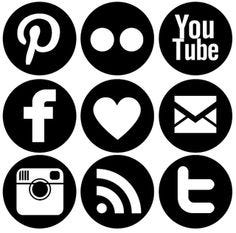Typically, the conversation goes like this:
Developer: Hey we just launched [new feature|product|site]!
Product: Great! How do we teach people how to use it?
Developer: We threw in a few tool tips…
Product: Sounds good, we’ll put version 2 of onboarding in the backlog
(…never gets done)
For most products, however, fewer than 5% of new users who sign up will become actively engaged.
80–90% of downloaded mobile apps get used once and then get deleted.

In addition to patching a leak in your acquisition funnel, the LTV of a successfully onboarded user can be up to 500% higher than a user with no onboarding (Kahuna).
1. Set a goal for your user’s behavior
When you’re thinking about your onboarding experience, start with the end in mind.
What do you want your users to look like after they’ve successfully completed your onboarding?
Do you want them to understand all of your features at a basic level or a few key features at an intermediate/advanced level?
What would your ideal or super user do the day after signing up? The week after?

By setting a goal (or goals) for your users before starting to build an onboarding flow, you’ll save yourself time, strengthen your focus, and increase the likelihood of creating a successful experience.
2. Remind users how much better things will be with your product
Great, you’ve identified what an ideal user looks like after completing your onboarding experience. But, how can you make sure they make it through all of your carefully planned onboarding steps without leaving your site or app?
The answer is constant and compelling reminders of how much better their life will be with your product.
You know the power that your product has to simplify their lives, increase their productivity, or improve their morale, but new users don’t.
Each step of your onboarding flow should have a concise and compelling reminder of why you are taking them through this flow and how much better off they will be for it.
Need an example?
If you’re trying to get someone to connect to Facebook, let them know that you’re using their shared location and interests to personalize your product especially for them and that this information will help them find interesting content three times faster in the future.
Who wouldn’t connect to Facebook with that kind of information?
3. Show the “Emerald City”
At every step of your onboarding flow, you are fighting an epic battle to maintain your users’ attention.

One simple trick you can use to improve the likelihood they stay in the flow is to show them the “Emerald City in the distance” or the place they will land after completing the flow.
The easiest way to do this is with a modal on top of a semi-transparent background.
If you want to get fancy, the background can become less and less opaque as they get further in the onboarding flow, subliminally indicating that they are getting closer and closer to the end.
Note: Samuel Hulick popularized this concept and wrote about it extensively in his book “The Elements of User Onboarding.” Check it out here: https://www.useronboard.com/training/
4. Use social proof
What benefits does a power user experience from your product?

Are they 10x more likely to get followed on Twitter?
Do they make 5x more money?
Or do they receive 3x more leads of an average user?
Whatever your product is, you have social proof available from your best users that you need to share with your new users. To return to the prior example, if you’re asking for Facebook permissions, don’t just explain the way you’ll use the information, but also provide the social proof:
“Users that connect their profiles to Facebook are 50% more likely to get a match within 2 days!”
Again, you’re trying to make it almost impossible for users to leave, by showing them all of the value they would miss.
5. Land a user softly in your product
So you built a killer onboarding flow with an ideal user in mind, you told users how much better their lives will be with your product, you leveraged social proof, and showed the Emerald City in the distance, that’s enough — right?
Not so fast my friend. One of the most important parts of your onboarding flow is how it ends.

Do you drop your users into a confusing (or worse, blank) dashboard, and let them fend for themselves?
The ideal onboarding flow lands softly in a simple, user-friendly experience that reminds them what they accomplished in prior steps and slowly introduces new features and functionality.
You may even choose to include a smaller secondary onboarding that follows your robust onboarding with tool-tips, live chat, or videos to make the transition even smoother.
Intercom, Olark, and Hotjar are great resources for creating soft landings after onboarding.
Don’t Ignore Onboarding
Onboarding is incredibly important and immensely valuable for your web or mobile app. With a few simple steps, you can turn significantly more of your new users into power users.
Any onboarding tricks that you’ve found especially successful? Share them with me on Twitter at @amitch5903



0 Comments